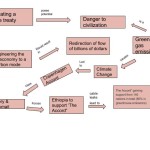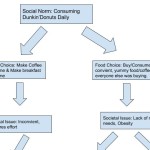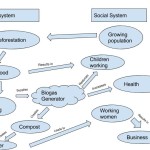1.Find a protected area anywhere in the U.S. and tell us why it’s protected
A protected are that I found is the Badlands National Park located in South Dakota. This national park is filled with striking geologic deposits, which contains one of the world’s richest fossil beds. This was once the home to mammals such as the rhino, horse, and saber-toothed cat but now the park’s 244,000 acres protects an expanse of mixed-grass prairie where bison, bighorn sheep, prairie dogs, and black-footed ferrets live today. A quick look at the Badlands will reveal that they were deposited in layers. The layers are composed of tiny grains of sediments such as sand, silt, and clay that have been cemented together into sedimentary rocks. It’s said that biologists have identified more than 400 different plant species growing in Badlands National Park. Each plant species is adapted to survive the conditions prevalent in the mixed-grass prairie ecosystem. The climate here is one of extremes, ranging from hot, cold, dry, windy and stormy, with occasional blizzards, floods, droughts, and fires.
2.What level, according to the International Union for the Conservation of Nature (IUCN), would your found protected area fall under and why?
The level that the Badlands National Park would fall under is Category 2: National Parks. Under this level, these areas are intended to balance ecosystem protection with human recreation. The Badlands National Park serves to protect it’s rich mixed-grass prairie, along with serving as a campground to humans. One problem with national parks in many developing countries is that there is little or no enforcement of regulations. I find this to be very true because while looking up this parks rules and regulations, all that they had listed was that as of February 22, 2010, a new federal law allows people who can legally possess firearms under applicable federal, state, and local laws, to legally possess firearms in this par. Then they mentioned that Federal law also prohibits firearms in certain facilities in this park; those places are marked with signs at all public entrances. Therefore, they have little regulations, as there is only one listed on their entire website.
3. Compare your found protected area with one of the protected areas mentioned in the module.
Yellowstone National Park, was the first national park in the world and was established in 1872. It provided habitat to the only wild bison herd during that era. Its model for protecting nature was to draw a boundary around a particular area and restrict human uses within it. The Badlands National Park is similar to Yellowstone National Park because they both are national parks, which means they’re both level 2, according to the IUCN. Also, both National Parks provided habitat to bison at one point or another. As stated in the module, National Parks can be very effective for conserving biodiversity, but it also raises questions of social justice. Although I agree with the concern of social justice, I believe that National Parks such as Yellowstone and Badlands are anthropocentric. I say this because many people “value” biodiversity for the sheer fact that these protected areas provide recreational benefits to them as well. hese National Parks are intended to balance ecosystem protection with human recreation




